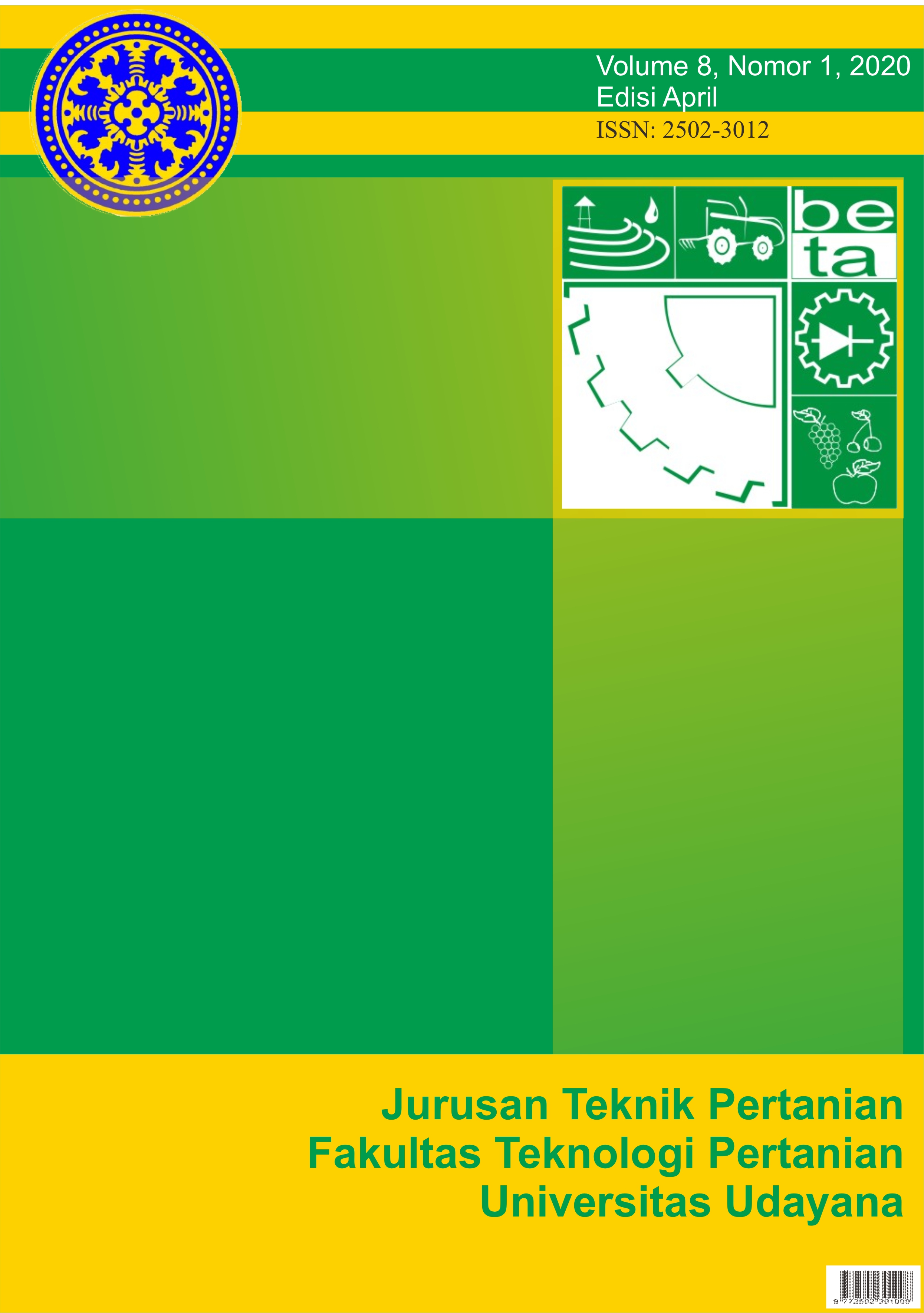Pengaruh Penambahan Pelepah Rebung Bambu (Gigantochloa nigrociliata BUSE-KURZ) dan Konsentrasi Aktivator Terhadap Kualitas Kompos yang Dihasilkan
Abstract
The purpose of this study was to obtain the composition of the ingredients and coordinate the optimal activator on compost quality in accordance with the Indonesian National Standard (SNI) 19-7030-2004. The raw materials used in composting are bamboo shoots and cow dung waste. The activator used was from a 2-week fermentation process from a banana hump that was added to rice washing water and brown sugar. The composting process in this study used a bamboo basket with a height of 100cm and a diameter of 60cm. The method used is factorial Completely Randomized Design with two factors. The first factor is the composition of cow dung and tabah bamboo shoot waste which consists of 5 levels, namely: 100%: 0%, 75%: 25%, 50%: 50%, 25%: 75%, and 0%: 100%. The second factor is the concentration of activator consisting of 3 levels, namely 250 ml, 500 ml and 750 ml. Each time repeated 2 times. In the process of composting temperature and pH every day for 31 days. Water content, C-Organic (%), Nitrogen (%) seen at the beginning and end of the composting process. The best combination of A3.B3 treatment with the composition of cow dung and bamboo shoot midrib (50%: 50%) activator concentration of 750 ml, resulted in a peak temperature of 47.250C with an average temperature during the composting process of 40.320C, average pH during composting process 7, 10, final pH 6.93, moisture content 35.95%, organic C content 23.9%, total N-content 1.46%, C / N ratio 16.42%. The resulting compost is blackish brown in color, has a crumb texture compared to other processing.
Keywords : tabah bamboo shoots, cow dung, composting, compost quality.
Downloads
References
Budiyani, N. K., Soniari, N. N., & Sutari, N. W. S. (2016). Analisis Kualitas Larutan Mikroorganisme Lokal (MOL) Bonggol Pisang. E-Jurnal Agroekoteknologi Tropika (Journal of Tropical Agroecotechnology).
Bilqisti, Q., H. Prasetya, dan Susanti. 2010. Tepung Bonggol Pisang sebagai Upaya Mengurangi Ketergantung Bahan Baku Tepung dari Luar Negeri. PKM. Institut Pertanian Bogor. Bogor.
Dewi, N. M. E. Y. Y. S. I. made N. (2017). Pengaruh bahan tambahan pada kualitas kompos kotoran sapi. BETA (Biosistem Dan Teknik Pertanian), 5(1), 76–82. Retrieved from http://ojs.unud.ac.id/index.php/beta
Gaur, A. C. (1982). A manual of rural composting. Food Agriculture Organization of United Nations. Rome.
Krisnawan, K. A., Tika, I. W., Ayu, I., Bintang, G., Studi, P., Pertanian, T., & Pertanian, F. T. (2018). Analisis Dinamika Suhu pada Proses Pengomposan Jerami dicampur Kotoran Ayam dengan Perlakuan Kadar Air Analysis of Temperature Dynamic on Composting Process of Rice Straw Mixed Chicken Manure with Moisture Content Treatment Abstrak, 6, 25–32.
Kusuma, M. A. (2012). Pengaruh Variasi Kadar Air terhadap Laju Dekomposisi Kompos Sampah Organik di Kota Depok. MT Tesis. Fakultas Teknik Universitas Indonesia, Depok.
Madrini, I. A. G. B. (2016). Community-based composting and management of leftover food for urban agriculture.
Pane, M. A., Damanik, M. M. B., & Sitorus, B. (2014). Pemberian Bahan Organik Kompos Jerami Padi dan Abu Sekam Padi dalam Memperbaiki Sifat Kimian Tanah Ultisol Serta Pertumbuhan Tanaman Jagung. Jurnal Agroekoteknologi Universitas Sumatera Utara, 2(4).
Setiyo, Y., Hadi, K. P., Subroto, M. A., & Yuwono, A. S. (2007). Pengembangan Model Simulasi Proses Pengomposan Sampah Organik Perkotaan. In Journal Forum Pascasarjana (Vol. 30, No. 1, pp. 1-12).
Suhastyo, A. A., Anas, I., Santosa, D. A., & Lestari, Y. (2013). Studi Mikrobiologi Dan Sifat Kimia Mikroorganisme Lokal (MOL) Yang Digunakan Pada Budidaya Padi Metode Sri (System of Rice Intensification). SAINTEKS, 10(2).
Suhastyo, A. A. 2011. Studi Mikrobiologi dan Sifat Kimia Mikroorganisme Lokal yang Digunakan pada Budidaya Padi Metode SRI (System of Rice Intensification). Tesis. Sekolah Pascasarjana. Institut Pertanian Bogor. Bogor.
Widiastuti, R. R. 2008. Pemanfaatan Bonggol Pisang Raja Sere sebagai Bahan Baku Pembuatan Cuka. Sripsi S1. Universitas Muhammadiyah Surakarta. Surakarta.
Yuwono, T. (2006). Kecepatan dekomposisi dan kualitas kompos sampah organik. Jurnal inovasi pertanian, 4(2), 116-123.












 Jurnal BETA (Biosistem dan Teknik Pertanian)
Jurnal BETA (Biosistem dan Teknik Pertanian)


